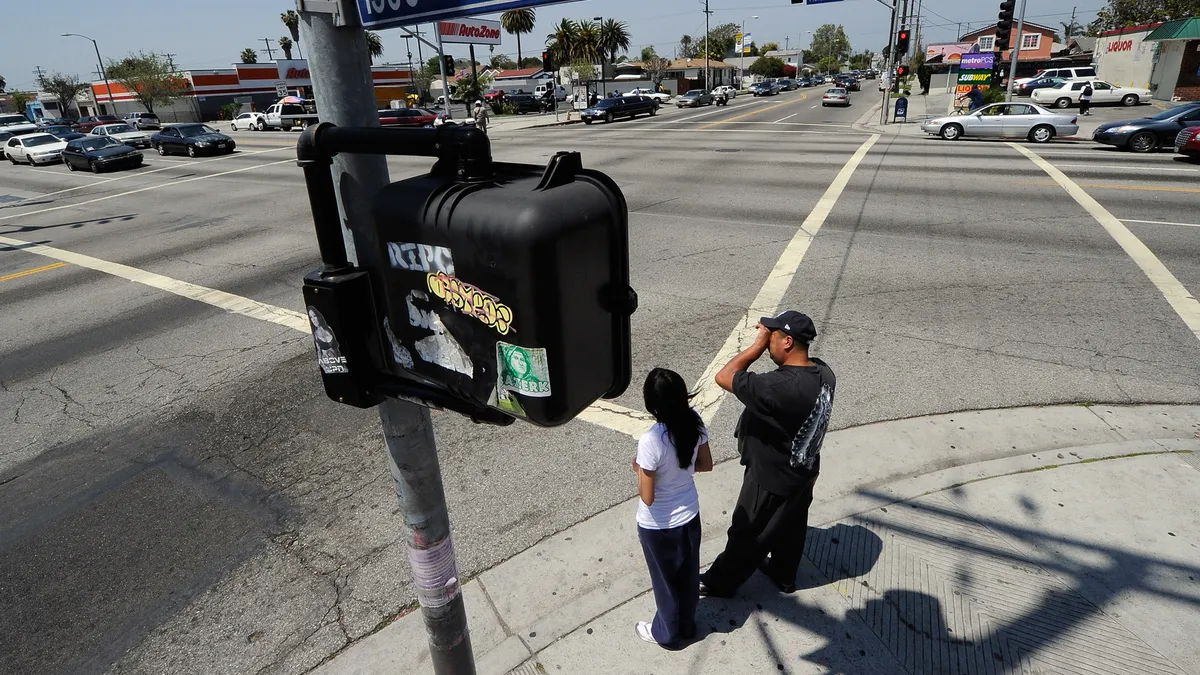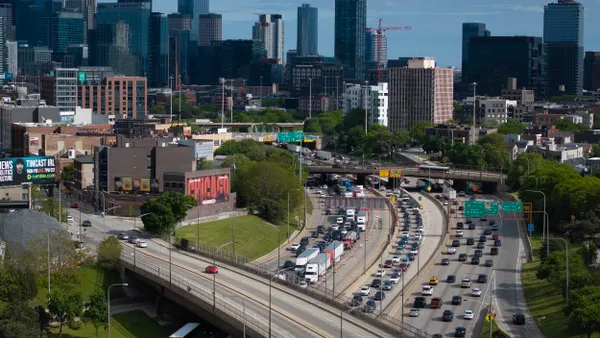Dive Brief:
- Pedestrian fatalities in the U.S. declined 4% in the first six months of 2023 compared to the same period in the previous year, according to an analysis published today by the Governors Highway Safety Association.
- Drivers killed 3,373 people from January through June 2023, based on preliminary data provided by state highway safety offices.
- “A decrease in pedestrian fatalities is welcome news, but we’re still far above the 2019 pre-pandemic level,” said Adam Snider, director of communications for the GHSA. “We need a national recognition of this crisis, and we need more and better infrastructure.”
Dive Insight:
Florida and New Mexico had the highest pedestrian fatality rates on a per-population basis, according to the GHSA analysis. Many of the most dangerous states are in the Sun Belt, where generally warmer weather encourages more walking and where urban areas flourished in the age of the automobile. Rhode Island and Idaho recorded the lowest rates.
Overall, pedestrian fatalities in the U.S. soared more than 70% from 2010 to 2021 as total traffic deaths rose about 30%, according to a Smart Cities Dive analysis of National Highway Traffic Safety Administration data. Experts cited distracted driving, reduced traffic enforcement, larger and heavier vehicles, more risky driving behavior and a higher incidence of driving while impaired as potential factors resulting in the outsized increase in pedestrian deaths.
“We have unfortunately seen some very significant reductions in traffic enforcement across the country,” Snider said. “And there’s a number of examples of cities sort of deprioritizing traditional traffic enforcement and then, unfortunately, fatalities surging since then.”
To deal with declines in traffic enforcement and police staffing, states are working to get more officers on the road, while more states and cities are looking into automated enforcement technology, Snider said. Those include cameras to detect red-light violations and vehicles passing a stopped school bus with its red lights flashing, along with automated speed radar and cameras.
But Snider underscored the need for equitable traffic enforcement. “We need to work with more communities, most especially communities of color and under-represented communities, and bring them into the dialogue here,” he said. Research has shown that from 2011 to 2018, Black drivers were pulled over by state and municipal officers at higher rates than white drivers.
Snider is encouraged that states and municipalities are increasingly adopting the safe system approach, a comprehensive safety strategy set forth by the U.S. Department of Transportation in 2022. It’s built around five key strategies: safe vehicles, safe roads, safe speeds, safety for all road users and post-crash medical care.
The Federal Highway Administration updated federal regulations in January that govern traffic signs, signals and other roadway markings. The new rules include rapid-flashing beacons that pedestrians can activate at marked crosswalks and audible devices for visually impaired pedestrians.
The GHSA, along with the Ford Motor Company Fund, provided $94,000 to four states last year to educate teens in underserved and disadvantaged communities on safe driving programs. GHSA is also working with General Motors on distracted driving prevention and partnered with the National Road Safety Foundation to promote safe walking, biking and scooter use.












